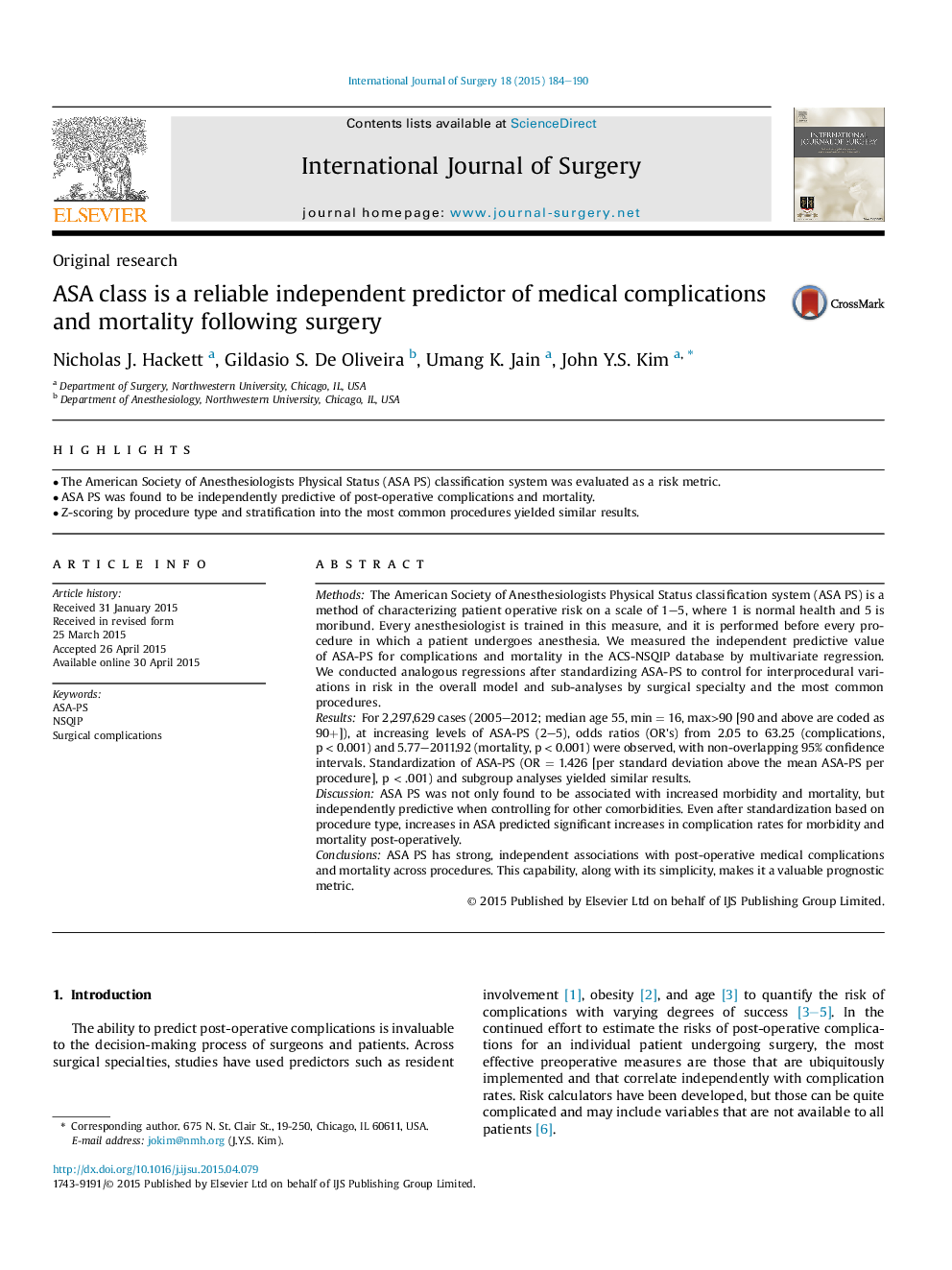| Article ID | Journal | Published Year | Pages | File Type |
|---|---|---|---|---|
| 4285846 | International Journal of Surgery | 2015 | 7 Pages |
•The American Society of Anesthesiologists Physical Status (ASA PS) classification system was evaluated as a risk metric.•ASA PS was found to be independently predictive of post-operative complications and mortality.•Z-scoring by procedure type and stratification into the most common procedures yielded similar results.
MethodsThe American Society of Anesthesiologists Physical Status classification system (ASA PS) is a method of characterizing patient operative risk on a scale of 1–5, where 1 is normal health and 5 is moribund. Every anesthesiologist is trained in this measure, and it is performed before every procedure in which a patient undergoes anesthesia. We measured the independent predictive value of ASA-PS for complications and mortality in the ACS-NSQIP database by multivariate regression. We conducted analogous regressions after standardizing ASA-PS to control for interprocedural variations in risk in the overall model and sub-analyses by surgical specialty and the most common procedures.ResultsFor 2,297,629 cases (2005–2012; median age 55, min = 16, max>90 [90 and above are coded as 90+]), at increasing levels of ASA-PS (2–5), odds ratios (OR's) from 2.05 to 63.25 (complications, p < 0.001) and 5.77–2011.92 (mortality, p < 0.001) were observed, with non-overlapping 95% confidence intervals. Standardization of ASA-PS (OR = 1.426 [per standard deviation above the mean ASA-PS per procedure], p < .001) and subgroup analyses yielded similar results.DiscussionASA PS was not only found to be associated with increased morbidity and mortality, but independently predictive when controlling for other comorbidities. Even after standardization based on procedure type, increases in ASA predicted significant increases in complication rates for morbidity and mortality post-operatively.ConclusionsASA PS has strong, independent associations with post-operative medical complications and mortality across procedures. This capability, along with its simplicity, makes it a valuable prognostic metric.
